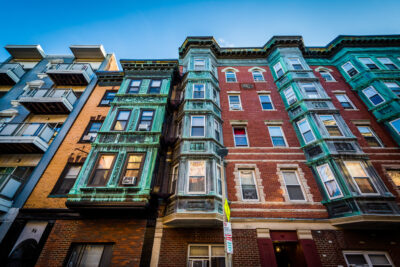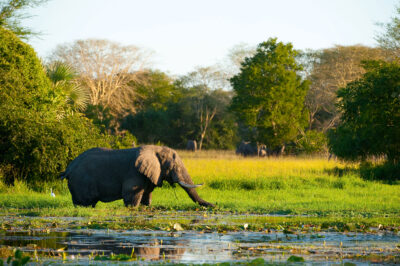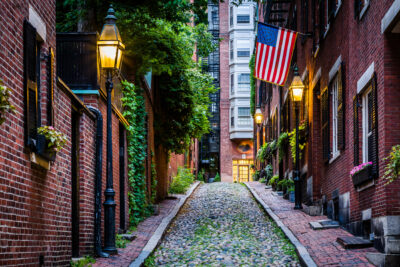
Tokyo’s green side: 5 places near Tokyo that put you in the heart of nature
While Tokyo tops the list of the world’s biggest metropolises, it’s more than just an endless urban landscape. Japan’s hyperkinetic capital is also bordered by plenty of pristine greenery that—thanks to a world-class rail network—is easy to reach from the heart of the city. Here are just five places you can find nature right on Tokyo’s doorstep.
1: Mt. Mitake

Just 90-minutes by train from central Tokyo (Shinjuku Station to Mitake Station, 55 kilometres), Mt. Mitake is a popular day trip for those seeking solace from the stresses of city life. The peak is situated in the Chichibu-Tama-Kai National Park, a 1,250 square kilometre expanse of deep forests, hidden valleys, bucolic villages, and river gorges. The 929-metre mountain is most famous for its Musashi-Mitake-jinja Shrine, which has drawn pilgrims from around Japan since before medieval times.
The colourful sanctuary sits atop the peak and can be reached by cable car and a 20-minute walk. After paying your respects, be sure to hike along the Rock Garden Trail which takes you through a narrow, mist-shrouded valley featuring moss-covered stones, cascading mountain streams and a sacred waterfall where local priests immerse themselves while practising the ancient meditation technique known as takigyo. From there you can pop up to the summit of nearby Mt. Hinode (902 metres) before soaking your weary bones in the replenishing waters of Tsurutsuru Onsen, a traditional hot spring nestled on the mountain’s flank.
2: Akigawa Valley

From Shinjuku it only takes about an hour to reach Musashi Itsukaichi, the train station which serves as the gateway to the lush Akigawa Valley. People flock here to relax and take in the glory of the trees, especially in the fall when the leaves turn bright hues of amber and red: Akigawa literally translates to “autumn river.”
While this placid valley offers various walking routes, a well-maintained trail begins at the train station and roughly follows the flow of the Akigawa River. This will take you over several bridges and past Kotoku-ji Temple, Kogon-ji Temple, and Mishima Shrine. This leisurely, nine kilometre hike ends at Jurigi bus stop where you can then catch a ride back to the starting point or head to nearby Seoto-no-yu Spa, a natural hot spring complex whose alkaline waters swirl and steam in both indoor and outdoor pools.
3: Hatonosu Gorge

This rugged canyon formed by the Tama River cuts through the heart of the Chichibu-Tama-Kai National Park and is easily accessible from central Tokyo in just under two hours. Hop the train at Shinjuku and take it to Hatonosu Station.
The gorge offers some of the rawest nature within striking distance of the city. Expect long-limbed trees reaching out over a river lined with ancient boulders carved and shaped by water that has blasted out of the mountains over millions of years. This is an ideal spot to camp, hike or take in the sights from the suspension bridge spanning the river, including the brilliant autumn foliage that lights up the ravine for a couple of weeks each fall.
4: Tachikawa

Situated on the city’s western edge, Tachikawa is a suburb just 30 minutes from Tokyo Station, via the orange Chuo Line to Tachikawa Station. It’s a popular refuge for people wanting to escape the hectic rush of the capital due to its laid-back vibe and the Showa Kinen Park. This expansive green space features walking trails and 14 kilometres of bicycle paths. Many variety of trees can be found here including maple, gingko, and over 1,500 sakura, whose cherry blossoms attract hosts of Tokyo residents each spring.
Once an air base, 180-hectare Showa Kinen Park is the largest in the greater Tokyo area. There are bicycles for rent on site and the park also boasts a Japanese garden, as well as fields of seasonal blooms such as poppies, tulips, hydrangea, and sunflowers.
Not far from Tachikawa is Kodaira Furusato Mura, a reconstructed farming village from the 1700’s. This ‘open-air museum’ is made up of a cluster of wooden, thatched roof buildings which allow visitors a glimpse into Japan’s older, rural heart.
5: Mount Takao

Known as a sacred peak, 599 metre Mt. Takao is only 50 minutes from the city centre (Shinjuku to Takaosanguchi Station, 50 kilometres) making it one of Tokyo’s easiest natural sites to access. While you can hike from the base of the mountain to the top in an hour or two, most visitors elect to take the cable car to the observation deck. Head even further up, to the summit, where, on a clear day, you can marvel at the snow-capped form of Mt. Fuji in all of her glory. From there it’s just another 45 minutes along Trail Number 1 to the summit. If you’re feeling like exploring more deeply, the mountain is criss-crossed by a network of numbered paths you can choose from.
On the way to the top, be sure to stop off at Yakuoin, an ornate temple that is home to several statues, to whom visitors pray for good luck. After your descent, a soak in the pools of Keio Takaosan Onsen Gokurakuyu will cure all that ails you.



















